Visiting North Norfolk, in the days before Christmas, can be a risky strategy. The weather can be dire, there can be floods or snow, and I always seem to catch a cold in the days before this longed for trip, and it has been scuppered several times. But the risk is worth it.
I have been journeying up to the coast nearly every year in late December for the last 23 years. I love the bleakness, the isolation, but most of all I love the wild geese.
This year I stayed inland on a farm near Binham, intending to travel the few miles to the beloved Cley reserve each day. There are only a few hardy souls who wade out onto the marshes in mid winter and that is just how I like it. The days may be the shortest of the year, but they are to be treasured.
This was the plan on the morning I woke to the sound of howling Storm Pia and decided to stay tucked up a while longer. I heard the distant call of geese and through the window next to me, in the halflight, I saw a dozen or so drifting across the sky, in their characteristic “V”. Skeins of geese are a familiar sight here, but the sound became louder and more pressing.
I pulled back the curtains of the patio window, and black against the drowsy apricot sky, were wave after wave of thousands of pinkfoots. Pouring in from all directions onto the sodden field ridges, dropping in bunches and landing within feet of my window. In my visits over the years I had seen fields of geese at a distance (usually from the car window as they are very easily disturbed) but never had I had a ring side view like this.
A red kite flew across, and I expected them to rise, but they remained, a mass of business and chatter, and I watched entranced.
When I returned to the farm before dusk, I hardly expected them to still be there, but they were. They were still shifting slowly across the landscape, barely perceptible against the pink brown earth. There is a constant purposeful sense of movement, with only the sentinel geese, the head of each family, rising above the bended necks, ever watchful of possible threats. Suddenly, their chatter stopped. Silence. They lifted, their white tail feathers showing against the leaden sky, drifting across towards the marshes where they would roost overnight.
Each year thousands of pinkfooted geese travel to this stretch of coastline from their home in Iceland, and Eastern Greenland, to spend their winters here and it is one of the great spectacles of nature. I learned when I was there that the figure this year, on the Holkham reserve alone, was over 70,000, which is 70% of the wintering population. They feed on the remains of the sugar beet crops after the beets have been harvested. As you can imagine, their presence is not always welcomed by farmers, indeed where I stayed the farmer expressed concerns that they would move from eating the beet remains to eating the beet itself.
I had been saving Nick Acheson’s book “The Meaning of Geese” as company for this trip and I couldn’t have chosen a better guide or companion. Written during the lockdown winter of 2020 -21, Nick travels on his mother’s old red bike following sightings of the geese along the coast, weaving in stories of their place in the community and their homeland. This beautifully written account conveys his deep love of these incredible birds with such enthusiasm and warmth that I felt quite bereft when it was over. His knowledge is worn lightly, but his observations helped me see the wonder of the pinkfooted geese with new insights. I learned of “whiffling” a term describing the descending movement of geese, as they tumble from the sky, zigzagging, to empty their wings of air so as to almost tip over. You can see this in the film below (do zoom in!) and, once it is pointed out, it is a joy to witness over and over again.
He is also the only nature writer I have read to see beauty in the ubiquitous wood pigeon, another bird that has proliferated on farmland in recent years. It may be dumpy, and a bit dim, but has:
Silken patches of sea green, furrowed like a goose’s neck, make a half collar formed of two unmelted spots of snow. A straw-yellow bill darkens - towards the pigeon’s apple-juice eyes - to a red the colour of a scab on a ruffian’s knee.
I wanted to shout “hurrah” at this description of a much maligned, but loved, bird!
For two more days I watched the geese from my window. I imagined that each morning the field would have been stripped of sugar beet, and they would be gone, but each morning they returned, shifting across slightly and becoming bolder in growing closer to the farm buildings. The numbers were fewer, as some had moved on to a field beyond to feed on new shoots ready to pluck. I didn’t want to leave them, though I felt enormously privileged to have witnessed their presence. But like the geese, I shall return in December, in hope that we will meet again.
Something to listen to
Listening to the writer Horatio Clare on his winter walks on Radio 3 has become something of a tradition. Sadly, his earlier forays have gone from the BBC archive but this Christmas his trip to Greenland was broadcast again. Magical, poetic and immersive. You have 25 days to catch it!
Something to read
Wild Geese - Mary Oliver
It would be impossible not to choose this to end. No matter if you know it well, it always bears rereading and seems especially hopeful and pertinent now. Pause a little longer and listen to Mary Oliver read it to you.
You do not have to be good.
You do not have to walk on your knees
For a hundred miles through the desert, repenting.
You only have to let the soft animal of your body
love what it loves.
Tell me about despair, yours, and I will tell you mine.
Meanwhile the world goes on.
Meanwhile the sun and the clear pebbles of the rain
are moving across the landscapes,
over the prairies and the deep trees,
the mountains and the rivers.
Meanwhile the wild geese, high in the clean blue air,
are heading home again.
Whoever you are, no matter how lonely,
the world offers itself to your imagination,
calls to you like the wild geese, harsh and exciting —
over and over announcing your place
in the family of things.
May I wish you a very happy and peaceful new year and thank you for your company. I hope to see you again in a couple of weeks.
Brent geese, another striking visitor to the North Norfolk coast




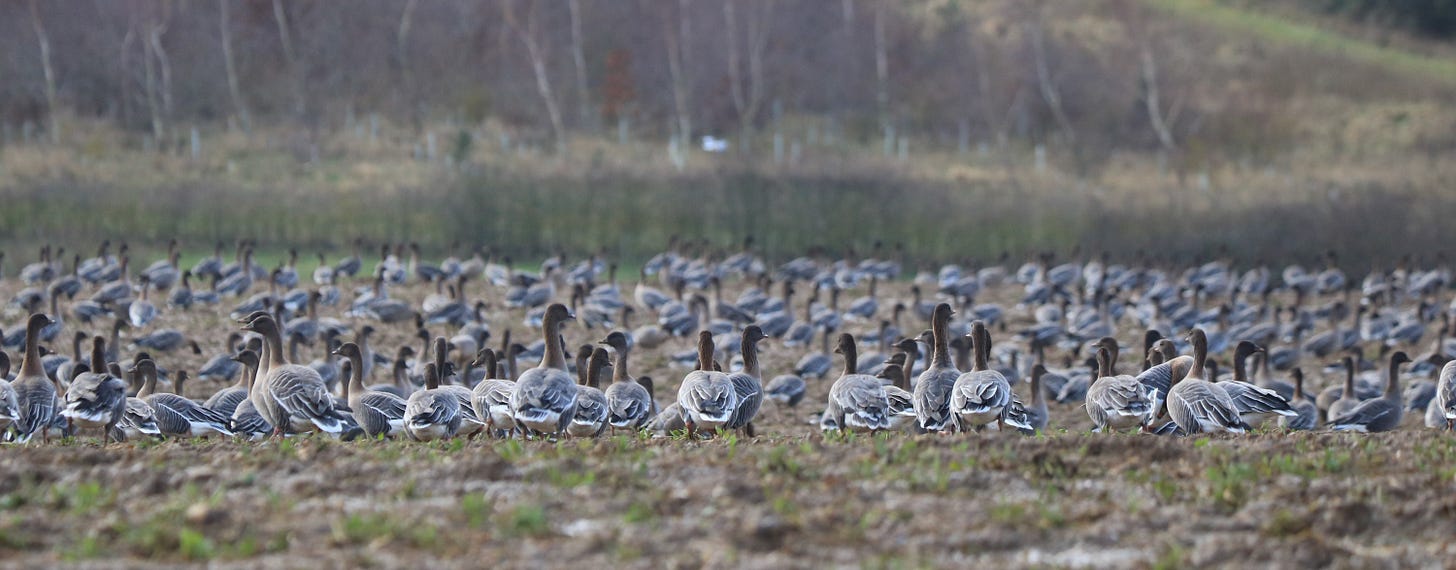
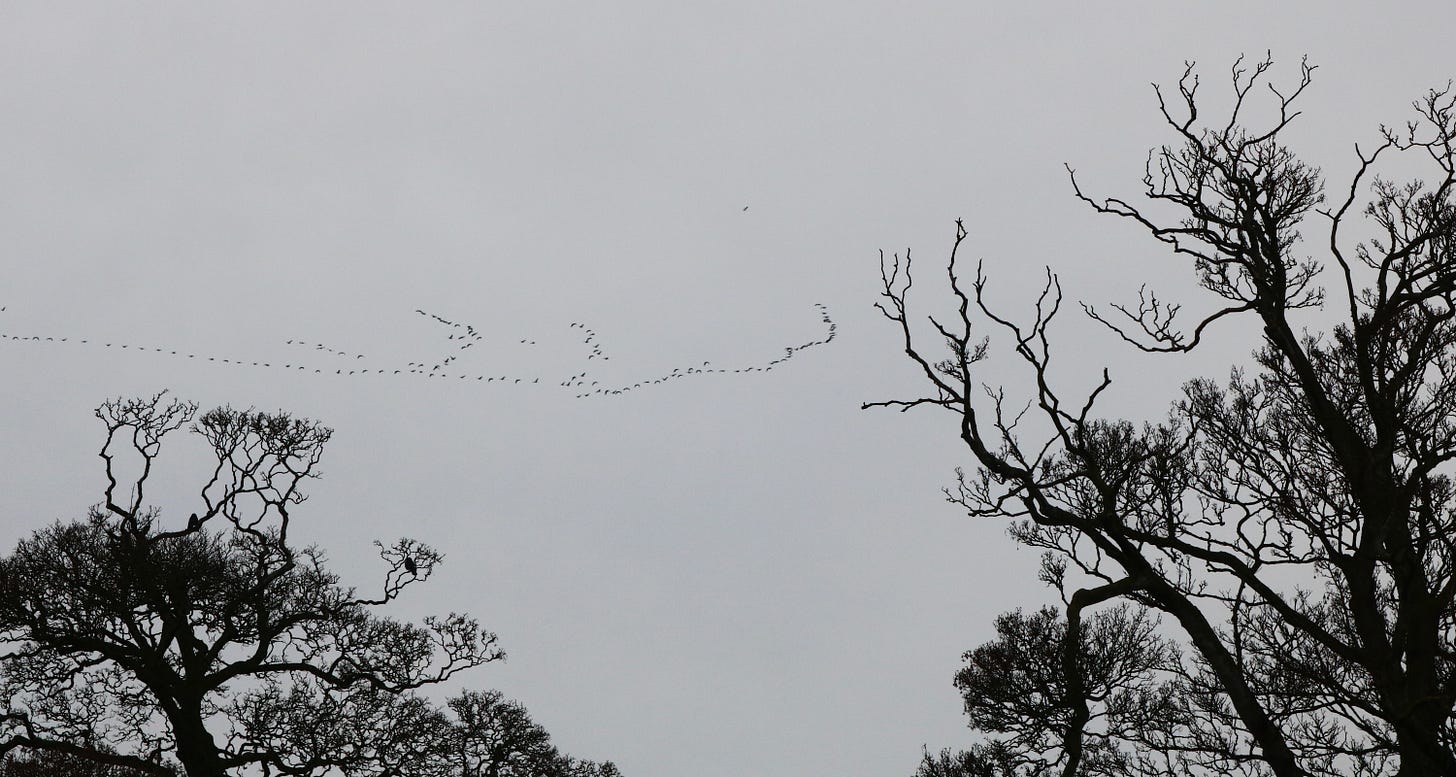
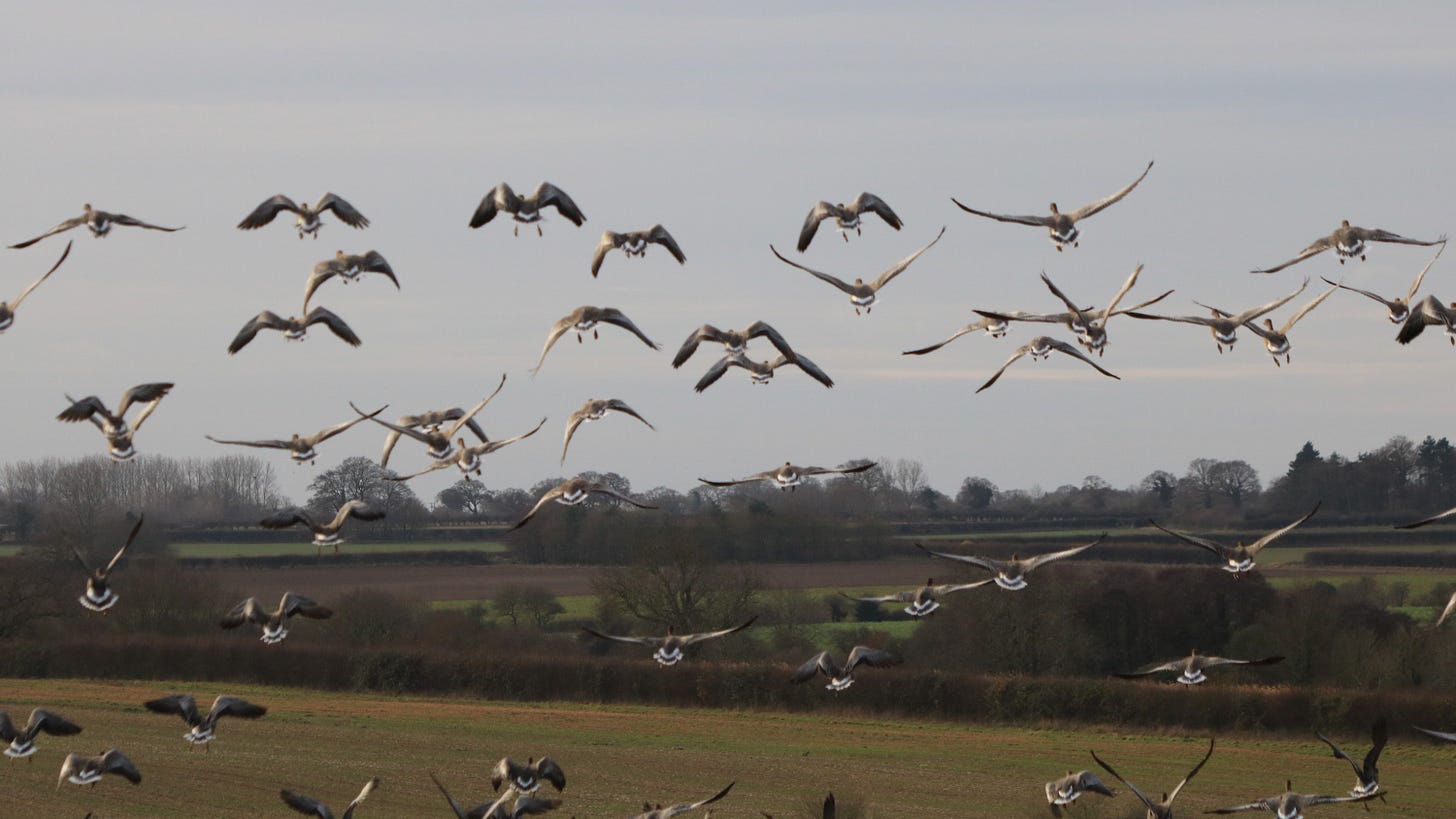
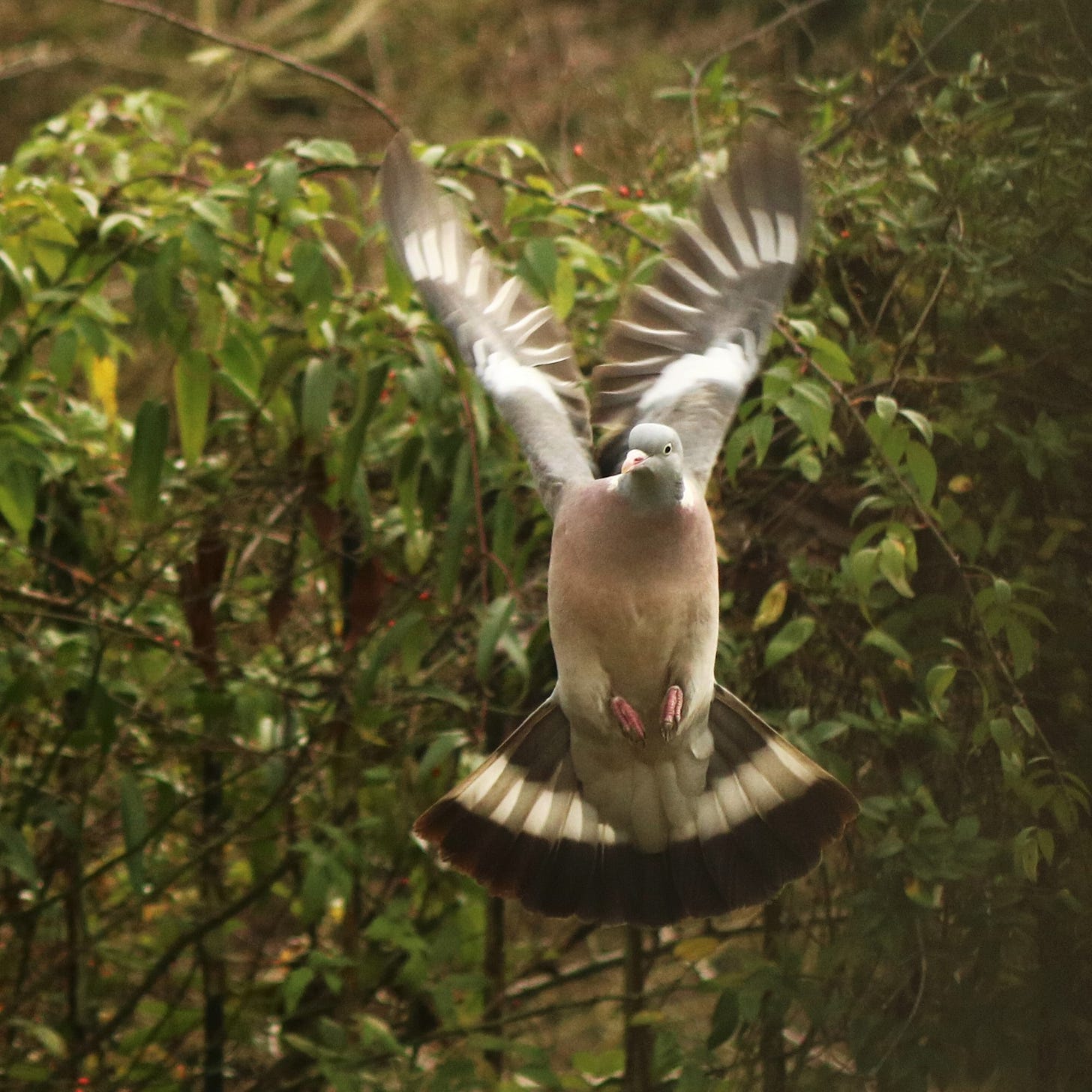
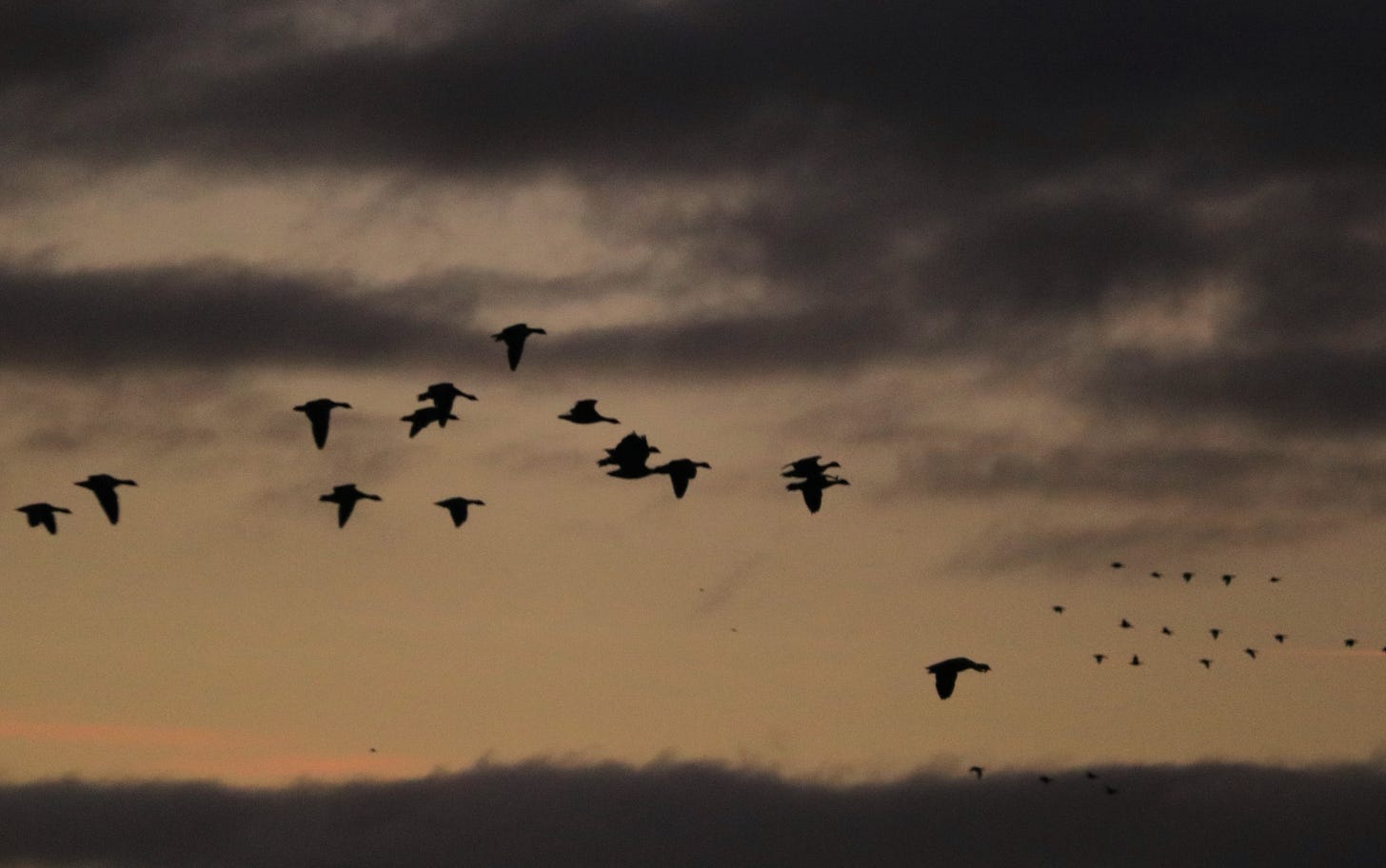
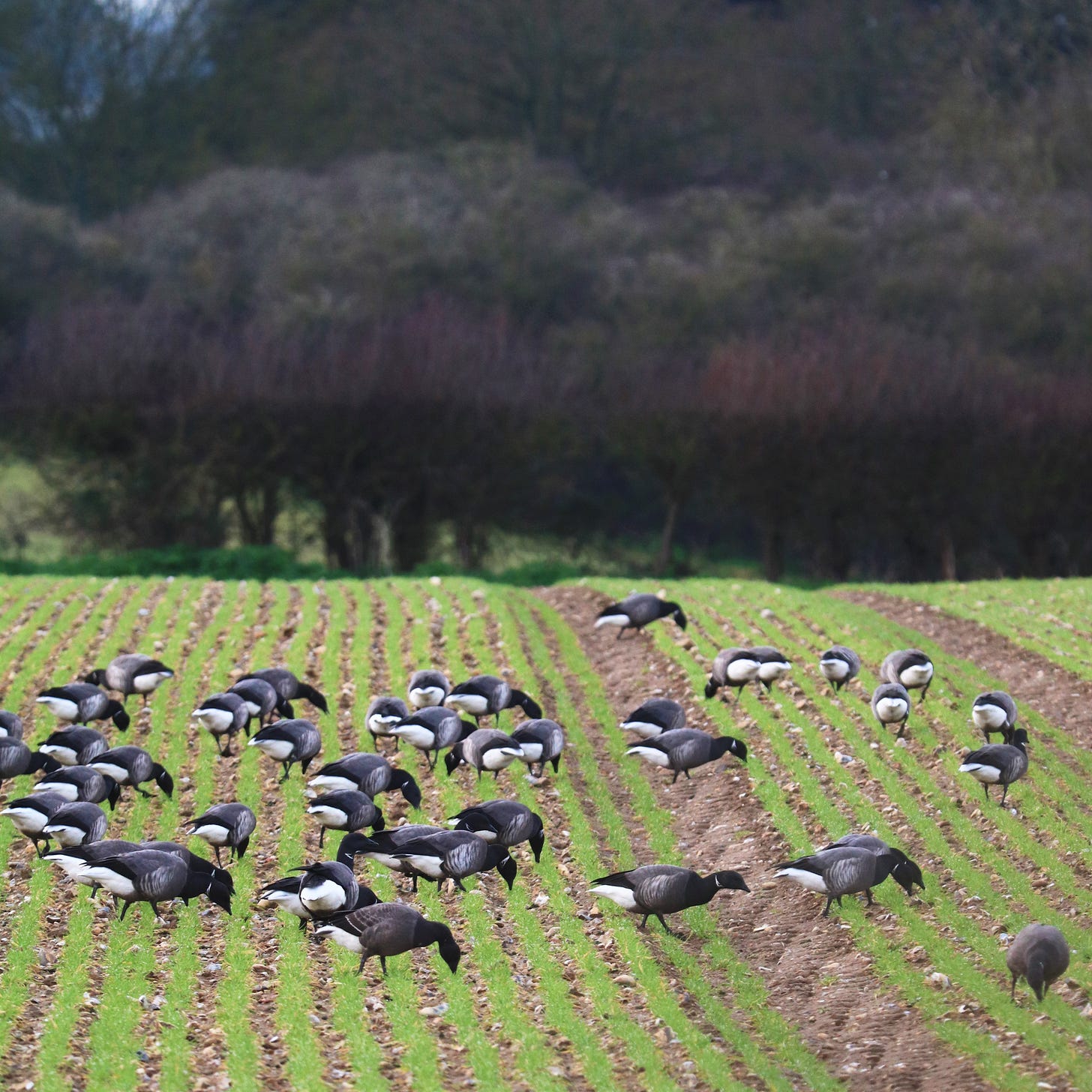
I love this piece of writing, I’ve read it twice. I’m soon to move to a place where there are lots of birds especially swans, ducks and geese and to see them fly in skeins makes my soul sing, there is something quite wonderful about it. I’m hoping to go off this afternoon to watch a murmuration of starlings, another joy for my heart.
What a magical collection of experiences and images shared, together with such interesting facts. I can't get over 70% of the geese being on our shores in this place. Mesmerising videos of the movements of so many birds together too. And I so appreciated the link to hear Mary Oliver herself reading her beautiful words, thank you so much for this post.